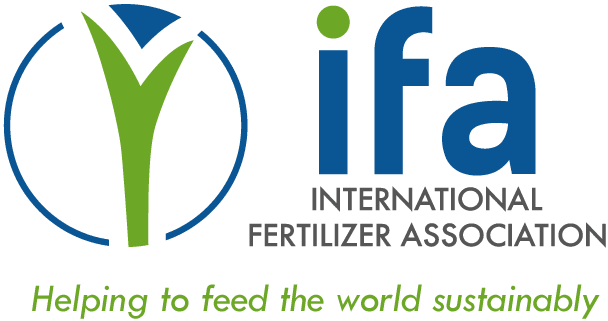Micronutrients’ Roles in Improving Crop Yields and the Effectiveness of Nanoscale Formulations
Dr. Upendra Singh, Deputy Director of Headquarters Research at the International Fertilizer Development Center (IFDC) discusses the many benefits of micronutrients for improving both crop and human health and how nanoscale formulations can release nutrients slowly over time.
How can micronutrients help to improve crop yields?
By enhancing disease tolerance of crops
Micronutrients are known to play a role in priming plants against diseases. While nitrogen, phosphorus and potassium (NPK)-based fertilizers drive overall crop productivity, their application at certain high doses can reduce plant structural integrity, raising tissue susceptibility to pests and diseases. At the same time, excessive P application can interfere with the uptake of native micronutrients, especially zinc (Zn), iron (Fe), manganese (Mn) and copper (Cu), from soil by plants. A reduced micronutrient uptake will lower plant resistance to diseases.
Combining NPK fertilizers with micronutrients increases tolerance to a variety of pathogenic diseases. Between 30% and 60% of the suppression of disease progression in crops is linked to the supply of Cu, Zn, Mn, calcium (Ca) and magnesium. These nutrients not only directly inhibit pathogen growth but also create plant resistance against future disease outbreaks, providing a preventive remedy.

By improving tolerance to drought stress
As with disease, micronutrients can also increase plant tolerance to abiotic stresses such as drought. This has been demonstrated in many crops including soybean, wheat and sorghum, among others. Collectively, different micronutrients have been shown to mitigate the effects of drought by between 10% and over 50%.
Priming crops with micronutrients before drought stress is a preventive strategy that reduces the effect of drought over the growing period, and allows crops to produce yield. In both cases of environmental stress (disease and drought), micronutrients fulfil these roles as they are co-factors for key enzymes responsible for regulating plant defense against biotic and abiotic stresses.
By boosting nitrogen uptake
Nitrogen (N) is arguably the most important driver for increased crop productivity. However, there is ample evidence that adding N to so-called non-responsive soils may produce only minor yield increases, if any, compared to no N addition. Moreover, plant N use efficiency which is already low (<50%) under normal soil moisture conditions is further lowered by drought, reducing fertilizer effectiveness for crop productivity improvement. Adding micronutrients together with N to non-responsive soils, however, increases yields by increasing N uptake in a variety of soil conditions.
In soybean, for example, drought stress significantly inhibits N uptake which can lead to yield reductions of about 47%, compared to the unstressed plants. However, adding a micronutrient composite formulation of Zn, Cu and boron (B) under drought increases shoot biomass production and grain yield. Studies have found grain yield to increase by up to 63% of the unstressed plants, regardless of the type of micronutrients. These increases in crop growth and yield are due to enhanced N accumulation in shoots and grains due to micronutrients application. Micronutrient-enhanced N uptake can also be seen in normal production conditions where there is adequate water availability, and thus appears to be a universal response, although the effects have varied among crop species, suggesting crop-specific responses.
In what ways can micronutrients improve the edible nutritional quality of crops?
A large proportion of the global soil is micronutrient deficient, especially in Zn. This has resulted in Zn deficiency in human populations that depend on such soils for their nutritional needs. Adding a micronutrient as fertilizer to soil can lead to an increase in the content of that micronutrient in plant tissues. When there is a deficiency of a specific micronutrient, increasing the plant shoot micronutrient content can directly improve the nutritional quality of leafy vegetables for human consumption.
Micronutrient translocation to edible grains and seeds can present a different scenario than shoot uptake, however. In many cases, the micronutrients can be efficiently translocated to the grain or seed. Zinc is one of the most important micronutrients in human health, the other being iron (Fe).
While the translocation efficiency does vary, in all cases, Zn amendment can strongly improve the Zn nutritional quality of crops. In that regard, grain Zn fortification via fertilization represents a significant nutritional outcome for critical populations that depend on grain staples.
Certain micronutrients, such as B, but also calcium, are reported to contribute in enhancing the firmness, and thus shelf life, of crop harvests via strengthening cellular structures. This quality is particularly important for preserving vegetables and tuber crops.

What impact can the specific formulations of micronutrients have on crop growth?
Specific formulations of micronutrients can affect plant growth and productivity differently. Nanoscale sized nutrients often show stronger efficacy than conventional sized nutrients. Studies have found that nanoscale Cu, for example, was 29% more potent than conventional Cu in suppressing wilt disease progression in eggplants, leading to a 42% greater yield. Similarly, nanoscale Zn incorporation by urea coating increased the yield of drought-impacted wheat by more than 50%, compared to conventional Zn.
Such effects are likely related to nanoscale formulations’ higher reactivity due to a greater surface area and their serving as reservoirs of bioactive ions that are slowly but continuously released to effect plant protection over time. The application of nanoscale micronutrient formulations may allow for using lower amounts of nutrients in plant production, possibly reducing water and energy inputs for production and application, as well as the overall cost of inputs, while not compromising yield.
Potential Future Research Areas
Given the many benefits of applying micronutrient to crop plants, there are a lot of potential areas that would benefit from further research including: understanding the mechanisms that cause micronutrients to increase N uptake in plants; measuring how effective different types of Fe and Zn fertilizers (salts, chelated ions, nano and conventional bulk oxides) are at simultaneously increasing grain concentrations of these micronutrients; evaluating Zn for mitigating drought stress under varying drought intensities and field conditions; developing advanced composite N-fertilizers containing micronutrients; and improving the efficiency of micronutrients in compound fertilizers (NP-, NPS-, NPK-based).

